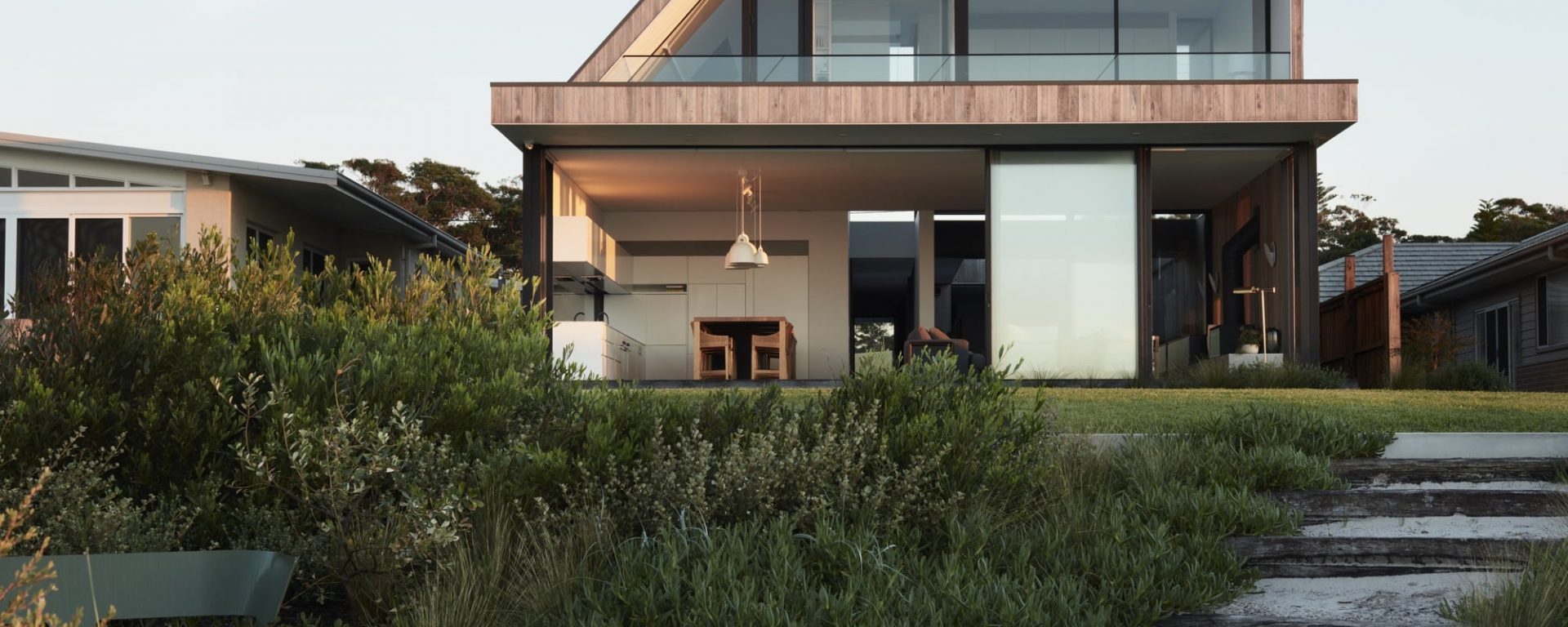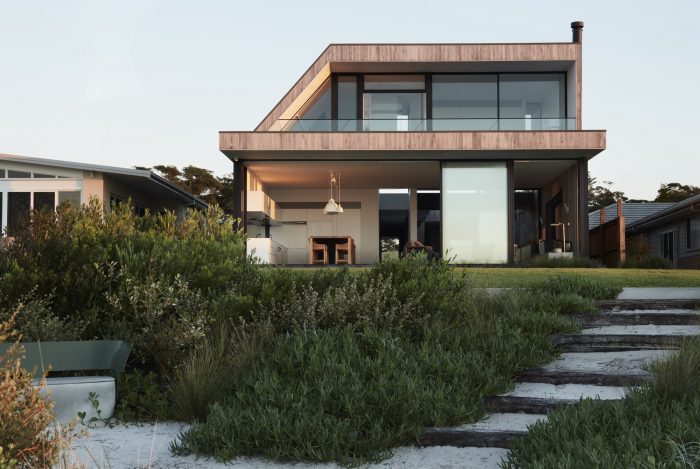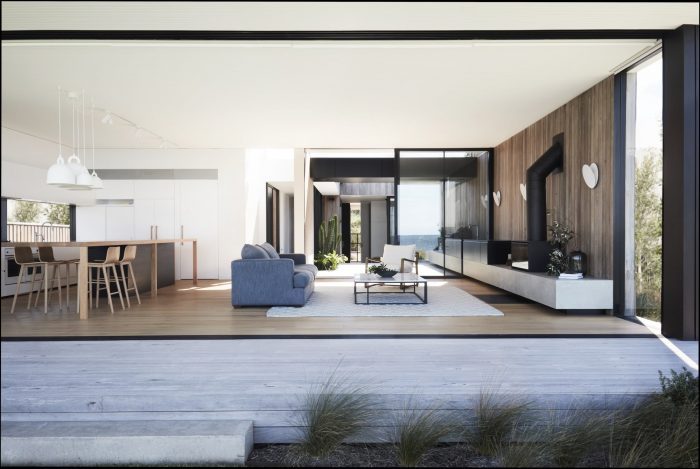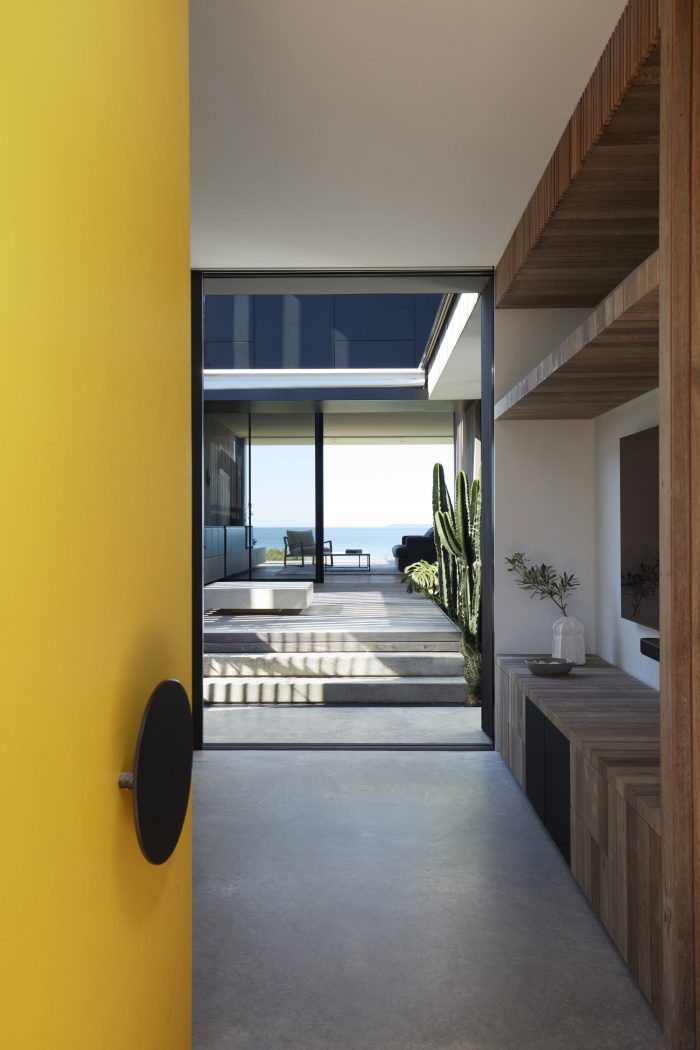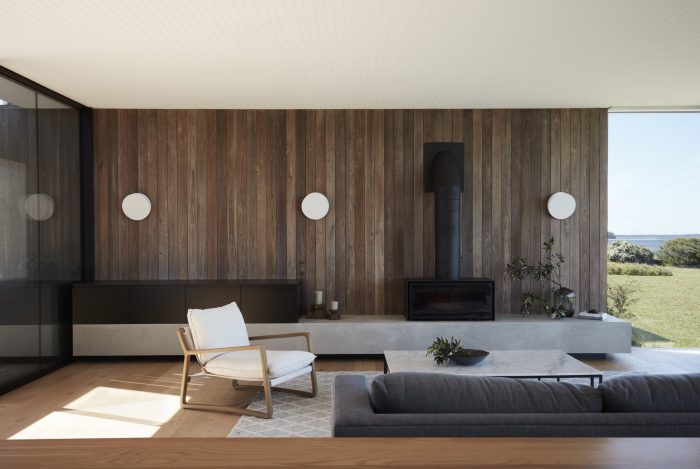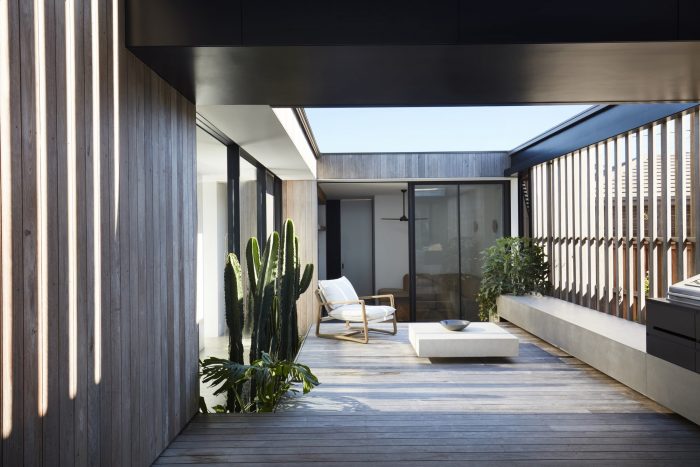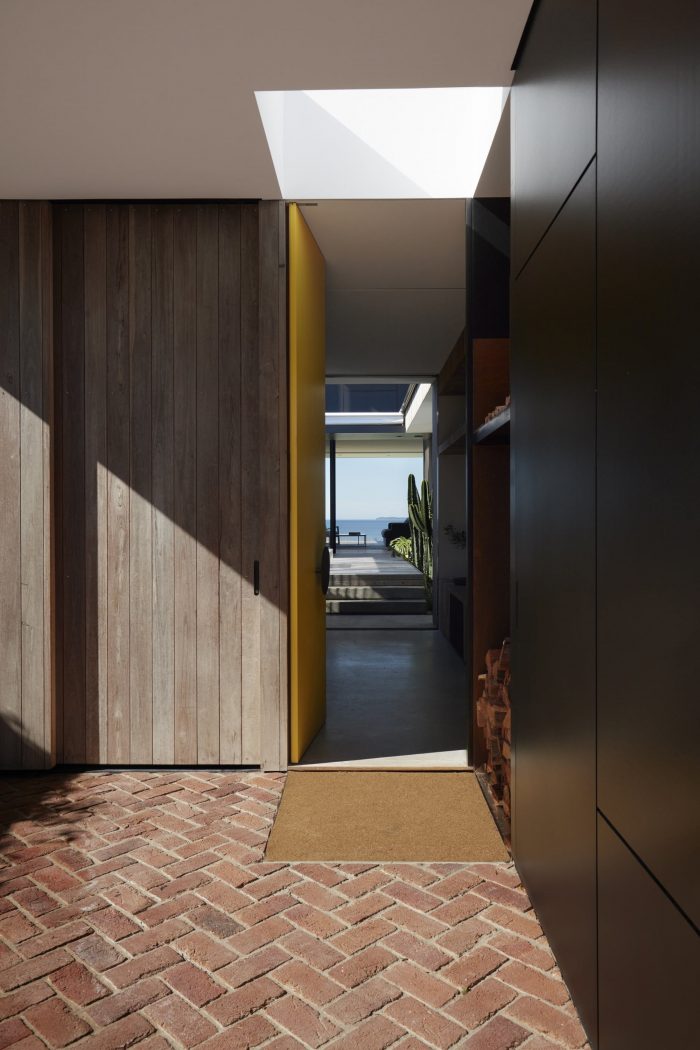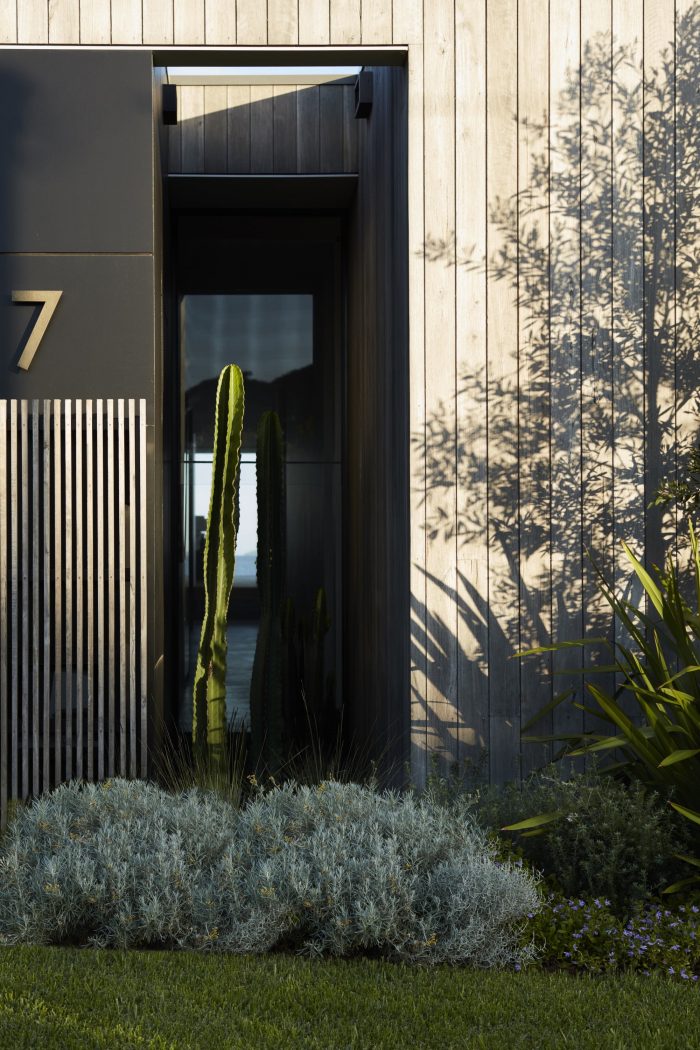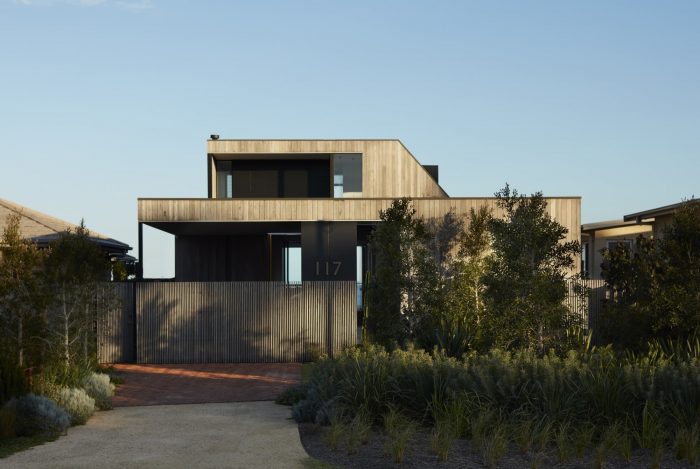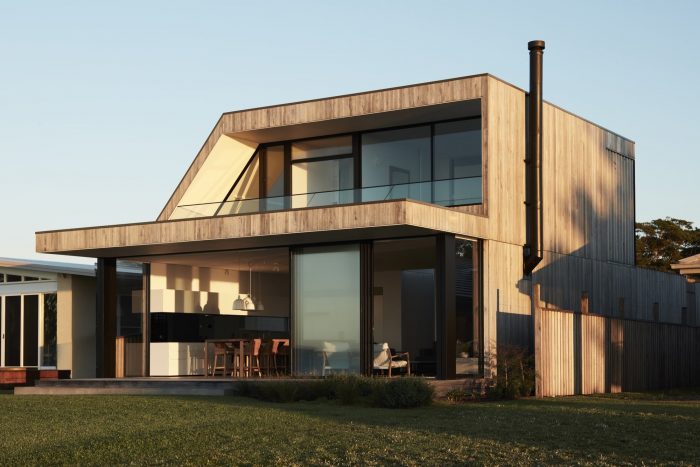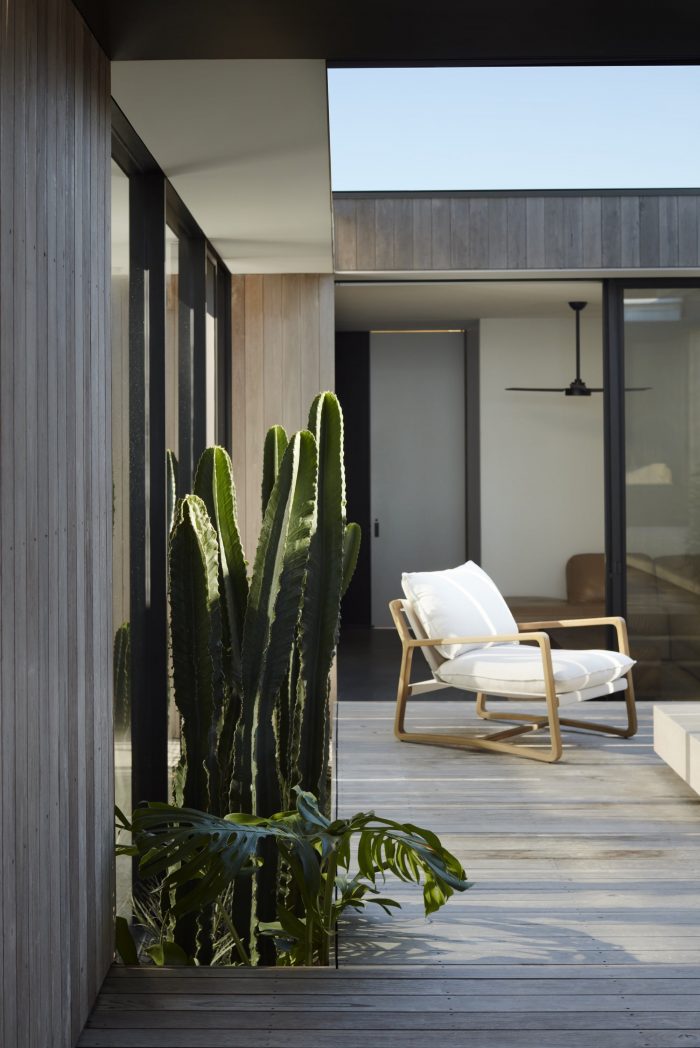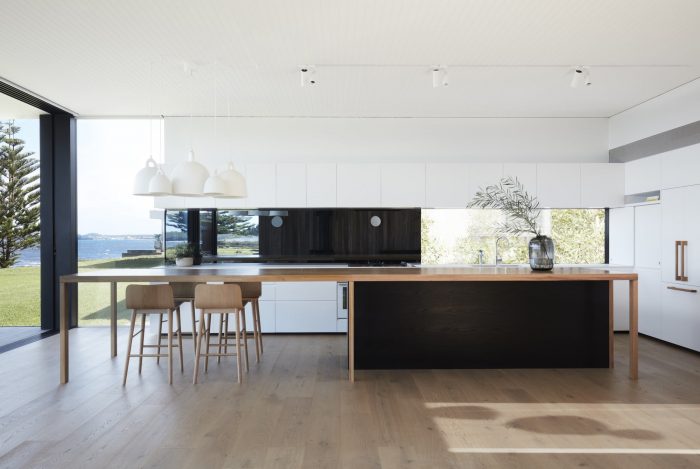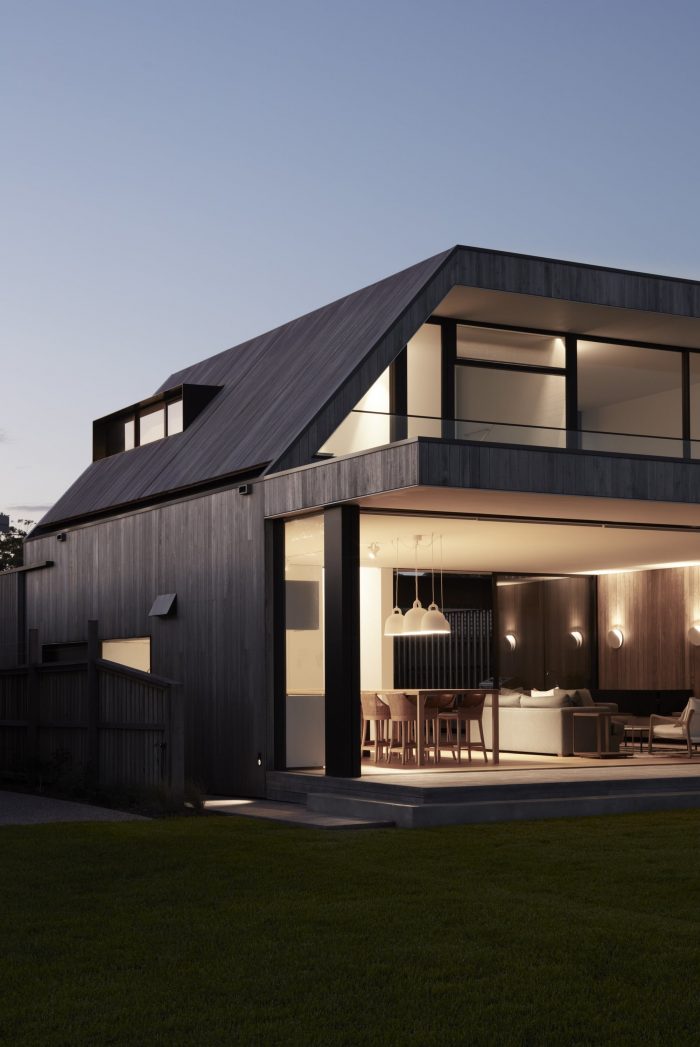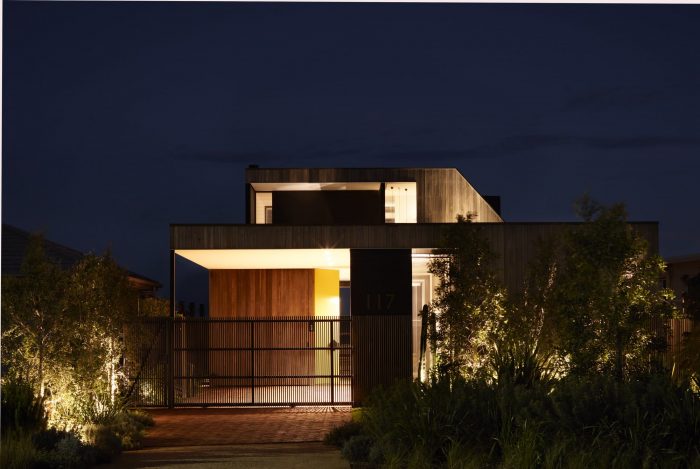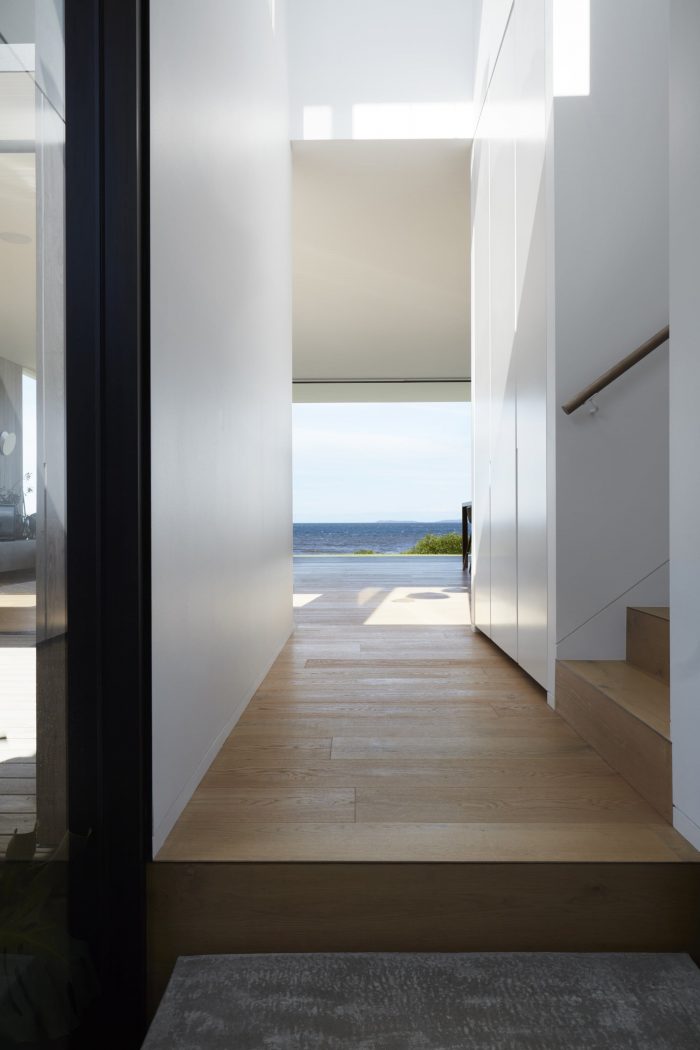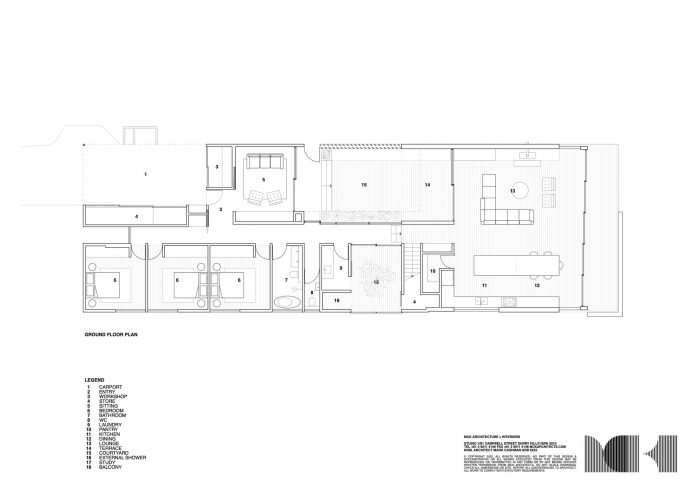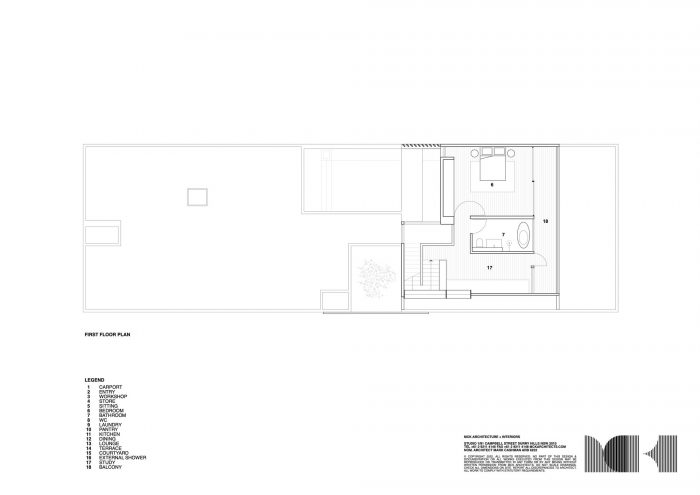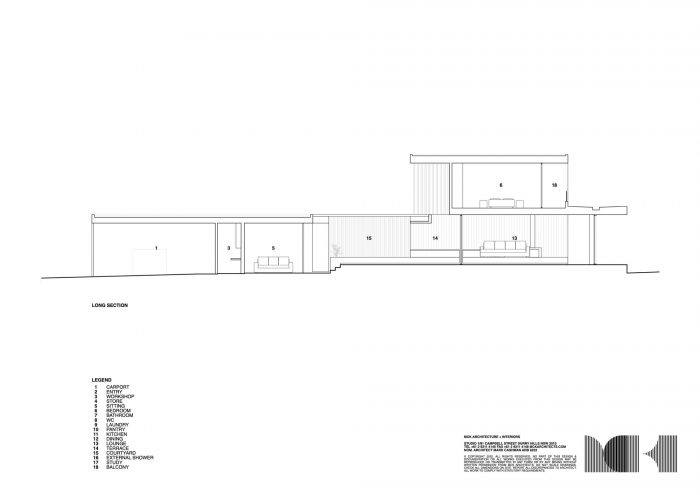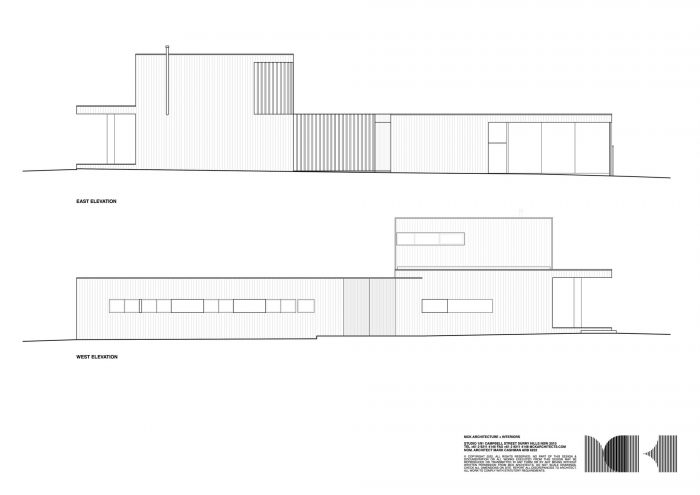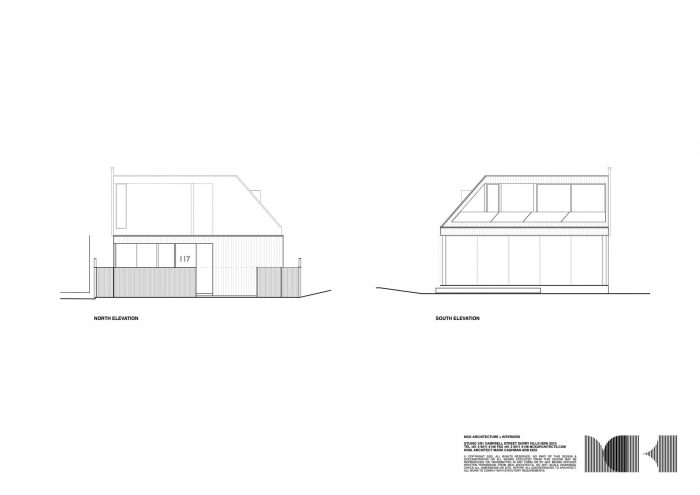几年来,一个位于悉尼的家庭在海滨地段的小型预制房屋中享受他们的假期,但最终已经不适应了。他们希望改善住宿条件,更好地利用位置和方面的优势,同时保留轻松、简单的居住模式。
For some years a Sydney-based family had enjoyed their holidays in a tiny pre-fabricated house on the beachfront lot but had finally outgrown it. They wanted to improve the accommodation and take better advantage of the opportunities of the location and aspect while retaining a relaxed, simple pattern of inhabiting the site.
设计的回应是保留场地的开放、暴露和风吹的性质,并允许房子的外壳提供隐私、安全和对元素的保护,实际上是把房子当作一个篱笆。对街道的谦逊和不显眼的展示的愿望,推动了房子作为一个在沙丘中风化的物体的想法。倾斜的屋顶形式由预先风化的斑纹树胶覆盖,参考了前沙丘上被风吹散的植被,并将阳光保留到邻近的房产。
The design response was to retain the open, exposed, and windswept nature of the site, and to allow the envelope of the house to provide privacy, security, and protection from the elements, literally the house as a fence. The desire for a modest and unassuming presentation to the street drove the idea of the house as an object which had weathered in place in the dunes. The slanted roof form clad in pre-weathered spotted gum references the windswept, pared-down vegetation of the foredune, and retains sunlight to a neighboring property.
房子的体量被院子刺穿,边界条件被仔细处理,以提供各种空间和氛围,以适应不断变化的条件。大型可开启的木质屏风允许简单地调节光照和遮阳、隐私和通道。
The volume of the house was punctured with courtyards, and the boundary condition was carefully handled to provide a variety of spaces and atmospheres to suit the constantly changing conditions. Large openable timber screens allow simple modulation of light and shade, privacy, and access.
建筑体量被推离了当地简陋的街景,向场地后方延伸,在那里,与滨水区的联系立即成为吸引所有游客的磁铁。在这方面,从前门开始就建立了一条海洋视线,并通过主要的流通大厅,形成了一条东西走向的枪形走廊。
The massing has been pushed away from the humble local streetscape towards the rear of the site where the connection to the waterfront immediately acts as a magnet to all visitors. In this respect, an ocean sight-line has been established from the front door, and through the primary circulation hall shaped as a shotgun corridor running east-west.
规划安排允许通过分隔额外的卧室翼来减少住宅的使用,这样的住宅对于两个人和10个人来说都很舒适。与当地的蛎鹬群体一样,这个家庭也选择在杰维斯湾的白色沙丘上筑巢。
The planning arrangement allows reduced usage of the home by compartmentalizing the additional bedroom wing, such that the home is as comfortable for 2 as it is for a group of 10. Much like the local Oystercatcher population, this family also chooses to nest in the white sanded dunes of Jervis Bay.
Architects: MCK Architecture & Interiors
Area : 249 m²
Year : 2021
Photographs :Prue Ruscoe
Manufacturers : Artedomus, PGH Bricks, Pullicino+Son
Builder : Martin Paul Leedham Builder
Structural Engineering : SDA Structures
Landscape Architects : The Garden Social
Landscaping : South Coast Gardens
Design Team : Steve Koolloos, Sam Gleeson, Mark Barrow
Concrete : Set in Steel
City : Callala Beach
Country : Australia

